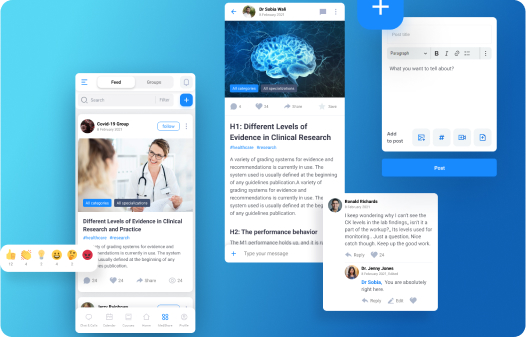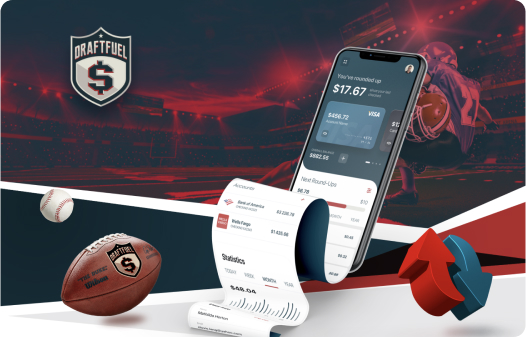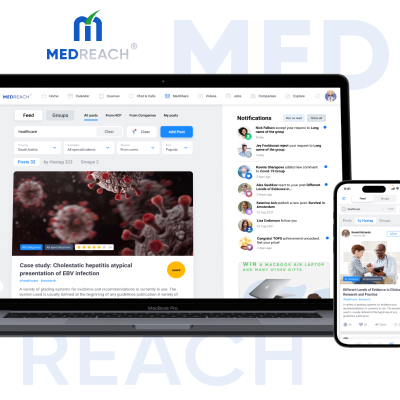Evaluate relationship with pharmaceutical/medical companies medical representatives to an advanced communication level.
MedReach
Challenges
- Low conversion rate on the main website.
- Lack of user confidence in the user experience.
- Need for an online store to sell security systems.
Project Goals
- Development of an e-commerce design for selling security systems.
- Implementation of a turnkey package offering (bundle).
Our Work
To address the client’s challenges, our company provided the following services:
- Development of responsive design for desktop and mobile devices.
- Creating a bright and intuitive user interface.
- Proper placement of visual accents.
Ensuring all necessary information is easily accessible. - Building the online store based on best practices and proven patterns in e-commerce.
By implementing these solutions, we aimed to enhance the user experience, increase conversion rates, and provide a
seamless shopping experience for customers looking to purchase security systems from Securando’s online store.
Highlights
Tasks
Solution
Preparation for the project, deep understanding of the processes in the customer’s industry.
A work plan has been drawn up, the most priority functional blocks and the needs of the target audience have been identified
The development of the prototype made it possible to visually understand how a large part of the project will look and the opportunity to create a more accurate assessment of the development.
The development process is configured. Project launch.
Stage 1: Idea Validation
The only material that the client had was a MindMap with all the sections he envisioned in the MVP. Yes, we’re not mistaken, it’s the MVP that he wanted to implement before the first release. While we were preparing to explain why an MVP couldn’t be so large, we were quickly informed of the reasons why it had to be that way.
The business situation is such that each pharmaceutical company has its own applications, CRM systems, and file storages. Some companies have certain tools that others may not have, and vice versa. At the same time, each company has its own database of doctors, and the channels and methods for acquiring customers are different. The main feature was precisely the creation of an ecosystem in which everything is present. And such a volume of functionality was meant to provide the necessary user and content channels to be attractive to all participants in the system. On the one hand, doctors who consumed content, and on the other hand, pharmaceutical companies that gained access to a huge database of doctors for interaction. And between them, medical representatives of pharmaceutical companies working in the field maintained communication.

Stage 2: Presale Works & Workshop
Realizing that the product was enormous and that it would be difficult to handle it with the standard process, we combined two services into one. We conducted an offline workshop where we:

Completed the Lean Procurement Canvas, identifying key points such as the target audience, business issues, unique value proposition of the product, how the product will solve the problem, and what people and resources are needed.
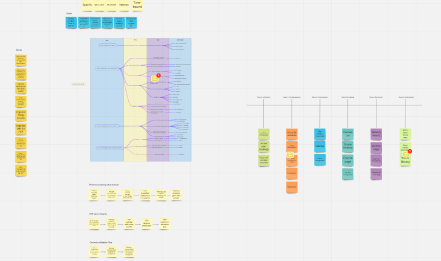
Created an Impact Mapping, outlining the project boundaries and building technical and business hypotheses. This helped us coordinate the work of specialists during the strategic planning stage, synchronizing it with the client’s global business objectives. We also outlined a basic development roadmap for the product, breaking it down into phases.
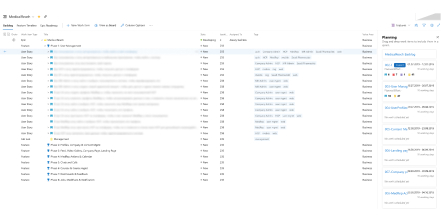
After we understood what we would be doing and in what order, we created a top-level backlog and prioritized it.
Stage 1: Idea Validation
After that, the design and visualization phase began to ensure that the vision and understanding were aligned 100%. The task was to design applications for 4 roles and 2 platforms, specifically:
- Super Administrator – web only.
- Pharmaceutical Company Administrator – web only.
- Medical Representative – web and mobile.
- Doctor – web and mobile.
In total, more than 400 mockups were developed. Lo-FI prototypes were created based on the mockups to understand the navigation logic. It is much easier to discuss and improve something when it is visually presented and everyone has the same understanding of the project. Below is an example of a prototype based on the mockups for the doctor role.
Our clients were pleasantly surprised by the quantity and overall result. This was because during the UX design mockup development, our designer discovered many blind spots and areas where user experience could be improved, which is hard to imagine when judging a project based solely on its description. Our plan was to create a highly functional app structure, adding all the necessary features, and then trim the fat during the workshop by removing functions that the MVP could do without. This was a pleasant surprise for the stakeholders.
We conducted a development assessment, which of course exceeded the expected cost, and even more so than the initial raw estimate before the design phase. This is almost always the case. Until developers see the full scope of upcoming work, it is extremely difficult for them to imagine exactly how much needs to be developed, let alone anticipate pitfalls, role relationships, and data flows. This, of course, becomes more evident over time.
During the next two days of the workshop, we removed functionality that “can wait” directly on the mockups and assessment file. We updated the backlog and began preparing for the next phase.
Stage 4: Seed Investments, MVP Design, Development & Improvements
The company secured an investment from a pharmaceutical company based in Saudi Arabia, which will also serve as a pilot user of the platform going forward. This is great news for the company and a significant step forward in expanding their reach and impact in the market. The investment is a testament to the quality and potential of the platform, and the partnership with the pharmaceutical company will undoubtedly provide valuable insights and feedback for future development. The company can now move forward with even greater momentum and confidence, knowing that they have the backing of a trusted and experienced industry leader.
After securing the investment, the company focused on organizing its development teams, designing the platform, and aligning the team. The MVP took around two years to develop before the company released it to the public. At the time of writing, the platform had over 12,000 users, including a pharmaceutical company that provided valuable feedback to improve the platform’s functionality.
